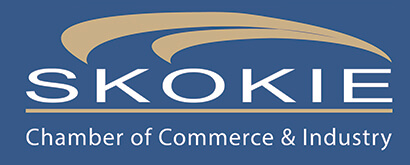Attention slips fast. People don’t remember where they saw you — just how you made them feel. For small business owners, that moment matters more than the whole marketing stack. One overlooked reply, one generic email, one clunky handoff can cost you a returning customer. Engagement isn’t about shouting louder. It’s about showing up with clarity, care, and timing. When done well, it becomes a loop: one action invites another, and trust builds in layers.
Define what engagement really means
Before strategies come into play, you have to understand what you’re even aiming for. Engagement is not just likes or clicks. It’s a customer pausing mid-scroll to pay attention. It’s a reply, a conversation, a referral. And for small businesses, that trust comes from intimacy — from building meaningful brand connections that don’t feel transactional. Whether you're running a bakery or an app, customers want to know that someone real is on the other end. Engagement starts when they believe that.
Make the why obvious
Most business owners think engagement is about attention. It’s not. It’s about belief. Customers engage when they believe you see them — and you’re helping them move forward. That emotional ROI shows up when someone forwards your email or replies just to say thank you. It's how you start turning customers into advocates without asking for it. You’re not just making a sale — you’re building memory, momentum, and a message they’re willing to repeat.
Creative tech can deepen — not replace — connection
What if AI didn’t just automate — but inspired? Generative tools aren’t just about filling gaps. They help create from scratch: campaigns, visuals, copy blocks, assets you can edit or remix. It’s especially useful when your business relies on storytelling, visual identity, or speed to market. While most tools categorize, generative platforms create — making them distinct from alternatives to generative AI that simply recommend or filter. When used well, they unlock your originality — not overwrite it.
Use personalization — but don’t make it creepy
One of the fastest ways to lose trust is to treat everyone the same. Your emails shouldn’t sound like they’re for a list of 10,000. Even something as small as a name, context, or pattern recognition can shift the tone. You’re not data-mining — you’re listening. Smart brands learn to deliver tailored experiences that drive growth without overstepping. That’s the difference between personal and invasive. It’s not about what you collect. It’s how you use it.
Automate the parts that drain you, not the ones that connect
There’s a difference between scaling and distancing. The best small businesses use automation to get out of their own way — not to hide from their customers. Pre-scheduled follow-ups, post-purchase nudges, and autoresponders let you focus on live relationships. Done right, automated outreach that scales engagement helps maintain continuity without draining your energy. It’s not about efficiency for its own sake. It’s about earning more space to do the human stuff well.
Make it tangible — live, local, or in the moment
In-person experiences are a cheat code for engagement. Whether it’s a booth at a neighborhood pop-up or a niche workshop for 12 people, nothing replaces being in the same room. The impact isn’t in the scale — it’s in the specificity. The little moments hit the hardest: a personalized takeaway, a thank-you gift, a story shared. When you invest in creating memorable live brand moments, you create not just events — but anchors in people’s memory. That’s where loyalty lives.
Know the difference between helpful and hollow AI
Many businesses are racing to add AI to their workflows. Some of it works. Some of it doesn’t. Customers can smell the difference between authentic voice and machine-scripted blur. You might save time, but lose something harder to recover. That’s why smart operators lean into AI tools that build, not erode, trust — using them to augment, not impersonate, real communication. There’s room for efficiency. But not at the cost of sincerity.
Customer engagement isn’t a checkbox. It’s a rhythm — a set of signals you send every time someone interacts with your brand. And the best strategies don’t just capture attention; they create motion. From the right kind of automation to the right kind of surprise, it’s all about giving people a reason to care — and then showing up like you mean it. As a small business, your edge isn’t scale. It’s soul. Engagement is how you make that visible.

